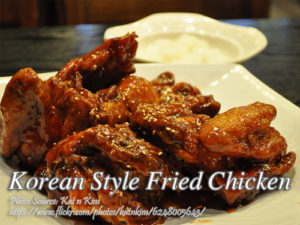The ever famous Korean beef stew is obviously a Korean dish but Filipinos also loved this dish. I’ve heard this is a popular dish served in House of Kimchi. I’m not very fond of Korean dish but this one is an exception. This beef stew recipe I have here is not very spicy unlike the original but I’m sure you are going to like it. There is an option if you really want to speed up your cooking. Buy a Mc Cormick mix but it might not as tasty as the well prepared dish.
Korean Beef Stew: A Comforting Classic with a Filipino Twist
When I first tasted Korean beef stew, I was visiting my Tita Maribel in Quezon City. She was always the family’s go-to cook for anything new or trendy. That weekend, her kitchen was alive with the rich, comforting aroma of tender beef simmering in soy sauce and star anise, a smell that instantly pulled us in from the sala. Though I’ve never been one to jump on the Korean food bandwagon, this dish won me over. It wasn’t overwhelmingly spicy like many Korean dishes tend to be, yet it still packed the deep, savory flavors that keep you reaching for another spoonful.
Interestingly, the Korean dish has found a special place in many Filipino households. Places like House of Kimchi popularized it, blending Korean techniques with flavors that resonate with local palates. This dish is the perfect example of how food can transcend borders, taking root in new cultural contexts and becoming something truly special.
Why Korean Beef Stew Works So Well
The magic of Korean beef stew lies in its harmony of flavors. The combination of soy sauce, beef stock, and star anise creates a rich, umami-packed broth that coats the beef perfectly. Star anise, in particular, is a key ingredient that might surprise some beginners, but don’t underestimate its power. Its slightly sweet, licorice-like flavor deepens the dish, balancing the saltiness of the soy sauce and enhancing the beef’s natural richness.
For beginners worried about getting that tender, melt-in-your-mouth texture, here’s a tip I learned from my cousin Carlo, who swears by his pressure cooker. Precooking the beef in a pressure cooker before sautéing not only cuts down the cooking time but also ensures that the meat is consistently tender. And if you use the leftover broth as your beef stock, you’re layering flavors instead of relying on water or bouillon cubes.
A Taste of Tradition with a Pinch of Innovation
One of the things I admire about this dish is its flexibility. My sister Leah, who often experiments with traditional recipes, added toasted sesame seeds to the stew one evening, and it became a family staple. She learned that toasting the sesame seeds releases their oils, giving them a nuttier, more intense flavor. It was such a simple step, yet it elevated the dish in a way that made everyone ask for seconds.
Then there’s the toasted garlic. You might think it’s just a garnish, but the crispy texture and bold, caramelized flavor of the garlic enhance the stew’s complexity. I once skipped this step out of laziness, and believe me, the dish wasn’t the same. Toasting the garlic separately, as my Lola taught me, ensures it stays crispy rather than softening in the broth.
Bringing the Dish Together
As the stew simmers, the house fills with a warmth that feels almost nostalgic. It reminds me of rainy afternoons when the family would gather around the dining table, chatting while waiting for the pot of Korean beef stew to finish cooking. There’s something about the process—sautéing onions until they’re soft and translucent, adding soy sauce and stock, and letting everything simmer until the beef practically falls apart—that feels soothing.
My Uncle Rudy, a self-proclaimed “soup master,” once told me that the secret to a perfect stew is patience. “You can’t rush it,” he said, stirring the pot gently, “because the flavors need time to get to know each other.” He was right. Every time I let the stew simmer a little longer, the flavors become more rounded, more cohesive, making each bite better than the last.
Adjusting to Your Taste
Filipino households love to make recipes their own, and Korean beef stew is no exception. Some might prefer it spicier—if that’s your thing, green chilies are a great addition. I tend to go easy on the spice, especially when serving this to kids, but for those who enjoy heat, a few chopped chilies can bring the dish to life. Don’t forget to season with patis (fish sauce) and black pepper toward the end. These final touches tie everything together, allowing you to adjust the stew to your preference.
A Dish That Brings Everyone Together
Korean beef stew isn’t just a dish; it’s an experience. Whether you’re cooking it for a Sunday family lunch or serving it at a gathering, it’s a meal that brings people closer. The rich, savory broth, tender beef, and aromatic spices create a comforting bowl of warmth that’s hard to resist.
It’s also a reminder of how food evolves and connects cultures. While this stew may have originated in Korea, it’s now a beloved dish in Filipino kitchens, where it continues to adapt and grow. So, the next time you’re craving something hearty and soul-warming, give this beef stew a try. Who knows? It might just become a new family favorite, just like it did in mine.
How to Cook Korean Beef Stew
Ingredients
- 1 kilo beef short ribs or beef briskets cut into serving pieces
- 1 whole garlic minced
- 1 piece medium size red onion minced
- 1/2 cup soy sauce
- 4 cups water or beef stock
- 3 Tbsp sesame seeds
- 3 tsp sesame oil
- 3 pieces green chilies or siling haba sliced into strips (optional)
- 1 tsp black pepper ground
- 1 whole piece of star anise
- 1/2 cup brown sugar
- 1 piece beef bouillon just in case you use water instead of beef stock
- 5 stalks of spring onion chopped
- patis or fish sauce
- cooking oil
Instructions
How to cook Korean Beef Stew:
- Heat oil in a deep skillet and saute garlic until brown and toasted. Remove garlic from pan and set aside.
- If you want to shorten the cooking time, precook the beef in the pressure cooker until almost tender.
- Then use the beef broth as beef stock in cooking the beef stew instead of using water and beef bouillon cubes.
- In the same pan, saute onion until wilted then add the beef and stir fry until brown.
- Pour the soy sauce and beef stock just enough to cover the beef. If you will use water instead of beef stock, add beef bouillon cube.
- Add in the star anise and sugar and bring to a boil for an hour or until beef is very tender.
- In the meantime, heat an empty skillet and toast the sesame seeds until slightly brown.
- Mix with a spatula while toasting so it will be even, just prevent it from burning and turning it like black peppercorns.
- Add the toasted sesame seeds, spring onions, toasted garlic, sesame oil, green chilies and simmer for additional 5 minutes.
- Season with patis and black pepper and adjust the taste according to your taste buds. Serve hot.
Video
Notes
Cooking Tips:
Precook the Beef for Tender Results
To achieve that melt-in-your-mouth texture, precook the beef in a pressure cooker before starting the stew. This step not only reduces the overall cooking time but also ensures consistent tenderness. Using the leftover broth from the pressure cooker as your beef stock deepens the flavor, making every bite more satisfying.Toast Your Sesame Seeds and Garlic for Extra Flavor
Toasting sesame seeds and garlic separately enhances their flavors and adds depth to the stew. Sesame seeds become nuttier and more aromatic when toasted, while garlic turns crispy and caramelized, providing a bold contrast to the rich broth. These simple steps make the dish more fragrant and layered in texture, elevating it from good to unforgettable.Simmer Slowly for a Richer, More Cohesive Flavor
Allowing the stew to simmer slowly ensures that the flavors meld together beautifully. The soy sauce, star anise, and beef need time to blend, creating a balanced, savory taste. Rushing this process can leave the stew tasting incomplete, so patience is key to achieving that perfect, comforting bowl.






If I use a pressure cooker, should I adjust qty of water or beef broth?
Hi Michael, I think you should adjust the amount of water but not sure how much.
Hi Isabel, oops I forgot to include it the instructions but I corrected it already. It’s optional anyway.
Hello. When to use the green chili? Thanks.
Hi Sergio, sorry for that mistake. I corrected the recipe already and thanks for your feedback.
What will i do with the sesame oil, when to use or mix to the procedure? Thanks.
Instead of Beef, Can the same recipe be used in same amount of pork and or chicken? or do I have to adjust all the ingredients? do you have any suggestions?
Hi Dagg,
I don’t see any problem regarding the amount of pork or chicken you will use. If the recipe says one kilo of beef, I think the same amount can be used in chicken or pork. What I’m not sure is the taste. Beef is the best for cooking Korean beef stew.
I was craving for a Kimchi (a fastfood chain’s name) version of beef stew this morning since its my favorite. However, instead of going to the store to order a take out, i tried cooking it myself using the recipe here with a few modifications due to some missing ingredients. Eureka! This worked for me. Tastes like the one I always order. And Rob, the fish sauce worked like a charm. Just season it according to your taste. Me, I just added a tablespoon of it. Also, I used cured beef (tapa), which greatly improved the taste. Well, that’s because its all I can pull out in the freezer too.
“Fish sauce, and its derivatives, impart an umami flavor to food due to their glutamate content.” (source: en.wikipedia.org/wiki/Fish_sauce)
Also, let me add some more info, there is a fermented fish sauce called “bagoong isda” usually colored brownish gray composed of fermented fish, salt and water. The fermented fish sauce I was referring to on most of the recipes here is “patis”, usually colored crystal brown and the fish is filtered. Only the fish essence, water and salt composed the “patis”.
Why?
What kind of a fool puts rotten fish sauce on beef?
@rob asbury
Most Asian and SouthEast Asian cuisines use fermented fish sauce. Fish sauce is like MSG that gives more flavor to dishes than using plain salt.